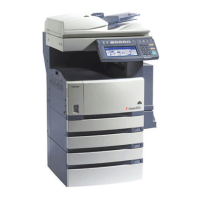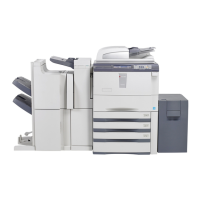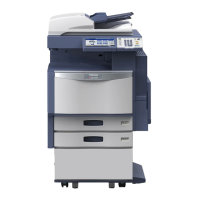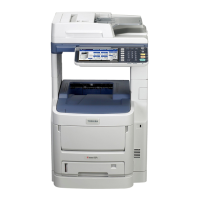PROCESS CONTROL August 2006
6-76
6.11.2 COMPONENTS USED DURING PROCESS CONTROL
Potential Sensor
There is a potential sensor in each PCU above the surface of the drum.
Each potential sensor consists of a probe and small power pack. A drawer
connector connects the probe and the power pack as shown above.
The potential sensor measures the potential of the drum immediately after it is
charged by the charge roller. It also measures a series of patterns (undeveloped
latent images) exposed on the drum by the laser diodes:
• A detector in the center of a very small window measures the strength of the
electrostatic charge on the drum surface. The strengths of the charges vary,
depending on the surface potential of the drum.
• A feedback circuit applies voltage to the probe until the strength of this charge
equals (offsets) the strength of the charge on the drum.

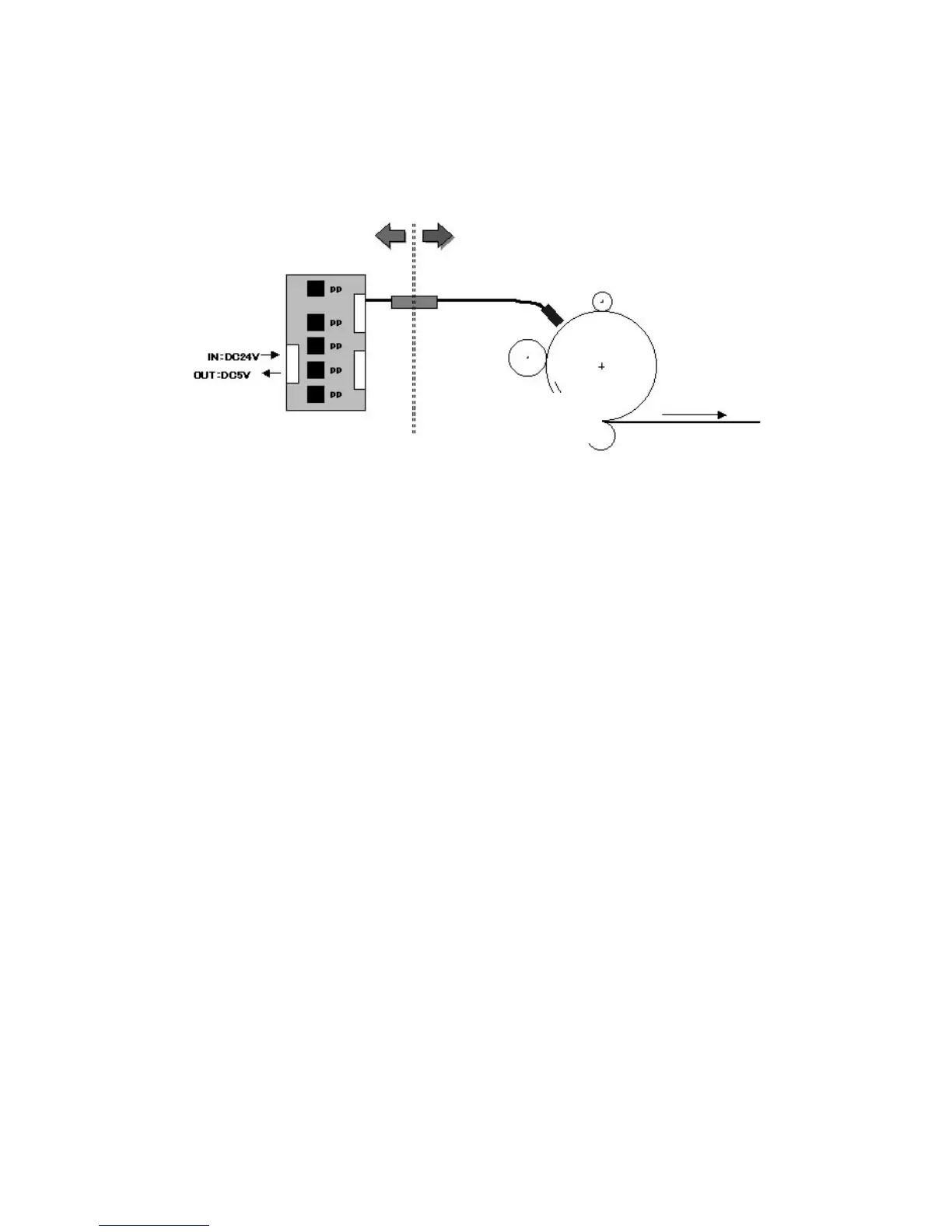